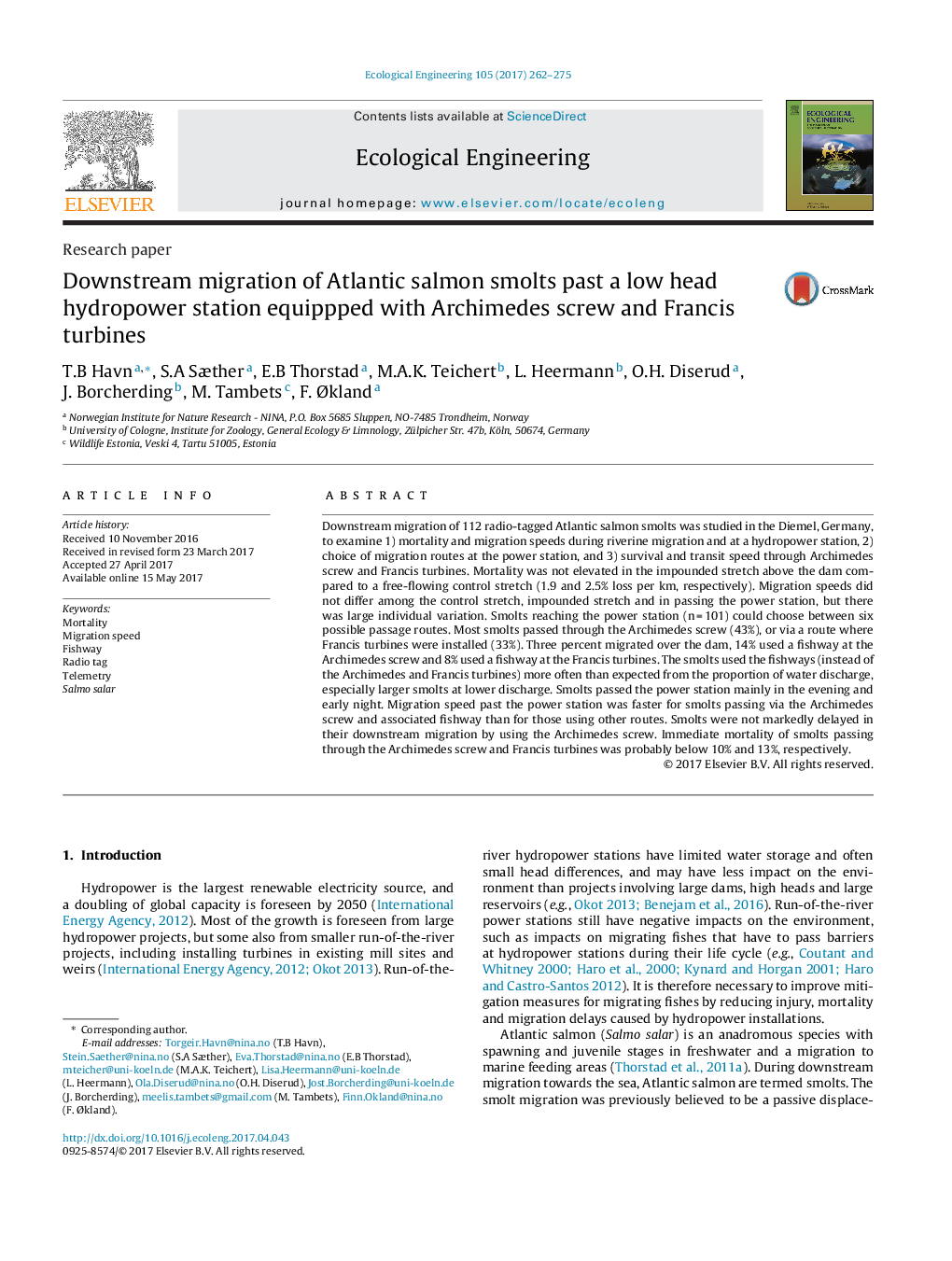| Article ID | Journal | Published Year | Pages | File Type |
|---|---|---|---|---|
| 5743620 | Ecological Engineering | 2017 | 14 Pages |
Downstream migration of 112 radio-tagged Atlantic salmon smolts was studied in the Diemel, Germany, to examine 1) mortality and migration speeds during riverine migration and at a hydropower station, 2) choice of migration routes at the power station, and 3) survival and transit speed through Archimedes screw and Francis turbines. Mortality was not elevated in the impounded stretch above the dam compared to a free-flowing control stretch (1.9 and 2.5% loss per km, respectively). Migration speeds did not differ among the control stretch, impounded stretch and in passing the power station, but there was large individual variation. Smolts reaching the power station (n = 101) could choose between six possible passage routes. Most smolts passed through the Archimedes screw (43%), or via a route where Francis turbines were installed (33%). Three percent migrated over the dam, 14% used a fishway at the Archimedes screw and 8% used a fishway at the Francis turbines. The smolts used the fishways (instead of the Archimedes and Francis turbines) more often than expected from the proportion of water discharge, especially larger smolts at lower discharge. Smolts passed the power station mainly in the evening and early night. Migration speed past the power station was faster for smolts passing via the Archimedes screw and associated fishway than for those using other routes. Smolts were not markedly delayed in their downstream migration by using the Archimedes screw. Immediate mortality of smolts passing through the Archimedes screw and Francis turbines was probably below 10% and 13%, respectively.
